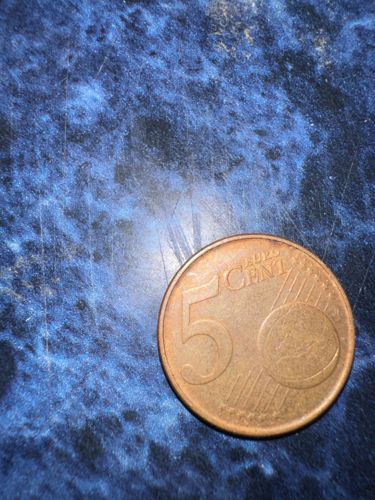5 Euro Cent Coin
Country of Origin: Eurozone (e.g., Germany, France, Italy, Spain, etc. - specific country cannot be determined without the reverse side, but it's a Eurozone coin)
Year of Issue: 2002
Denomination: 5 Euro Cent
Composition: Copper-plated steel

Brief Description
The obverse side of the coin displays a large numeral '5' to signify its denomination, with the word 'CENT' partially visible above and to the right. Below the 'CENT' is the year of issue, '2002'. To the right of the '5', there is a globe design depicting Europe in relation to Africa and Asia, surrounded by 12 stars representing the original members of the Eurozone. The surface where the coin rests appears to be a dark blue, possibly marble or granite, with lighter blue and white patterns.
Historical Significance
The 5 Euro Cent coin, like all Euro coins, represents a significant step in European integration. Introduced on January 1, 2002, the Euro currency replaced the national currencies of the participating European Union member states, simplifying trade and travel within the Eurozone. The design of the common side (shown here) was created by Luc Luycx and features a map of Europe, initially showing the 15 EU member states. The 2002 issue marked the very first year of physical euro currency circulation, making coins from this year particularly notable as they symbolize the historic transition.
Estimated Value
Circulated 5 Euro Cent coins from 2002 are generally worth their face value (0.05 EUR). However, uncirculated coins or those from specific smaller issuing countries with lower mintages might fetch a slightly higher value to collectors, typically a few cents to a euro. This particular coin appears to be circulated.
Care Instructions
To preserve the coin's condition, handle it by the edges to avoid transferring oils from your skin. Store it in a cool, dry place, ideally in a non-PVC coin flip, slab, or album designed for coin storage. Avoid cleaning the coin, as this can often decrease its numismatic value by damaging its original surface and patina. For display, consider using an inert, acid-free holder.
Created At: 2025-09-06T11:08:04.705294